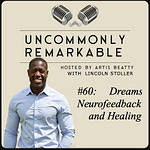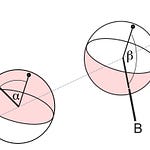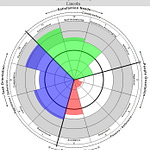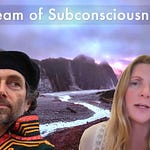“A computer would deserve to be called intelligent if it could deceive a human into believing that it was human."— Alan Turing
I’m in the minds business; I’m also in the programming business. I sometimes think of therapy as a programming problem. That’s not a bad idea, but you can’t take it literally (Kandola 2023).
Taken literally, “to program” creates a series of steps that always choose between right and wrong. Programming requires such steps to exist, that you can discern them, choose between them, and follow them to the end of the path. None of these requirements are met in the minds of real people, but we can still talk about those rare situations when they are. The right steps are often called “good ideas.”
As a therapist, my job is not to come up with good ideas so much as help people learn how to find them. I avoid the word “teach” because the process of finding good ideas is not taught. I can show a person how they’re sabotaging themselves, how to relax, and experiment, but there is no formula for finding good ideas.
Alan Turing designed and built the first digital, programmable computer (Dyson 2012). This involved a lot of unconventional guess work and equivocal support, mostly because his work was considered a military secret.
Touring didn’t appreciate the risks of being unconventional and socially unsupported. Society, which wields a stupid form of group intelligence, accepts eccentricity that generates easy benefits, but punishes eccentricity that disturbs social norms. So while Turing’s exceptional contributions to science and national security were secretly appreciated, his lack of authority led to his punishment for homosexuality and death by suicide at 41.
The Turing Test
In creating the first computers, Touring posed an existential problem called The Turing Test. This is a hypothetical test given to a system to determine whether it’s conscious. Turing’s insight was to refocus the question on how things appear, and to ignore the difficult question of what actually is.
The confusion around this test revolves around the definition of consciousness. Does consciousness mean sounding human, appearing sane, speaking a language, solving problems, or giving plausible answers? It’s generally agreed that passing the Turing Test requires a bit of all of these. A machine that passes the Turing Test could be said to think.
The irony is that computers now can pass the Turing Test, but they’re not thinking. To pass the Turing Test, machines are resolving and constructing sentences, and giving plausible answers to ambiguous but comprehensible questions. They even appear somewhat creative in interpreting incomplete information.
They’re doing this all according to preexisting, logical algorithms that select “best fit” answers from a pool of similar questions. What this demonstrates is not that computers can think, but that people don’t need to.
For the most part, people don’t think. We match patterns in the same way that computers do. If we want to recognize consciousness, we need a better Turing Test.
Deterministic Versus Nondeterministic Tests
Deterministic tests give repeatable results. We like deterministic tests and think in deterministic terms. We want what’s right to always be right, and similarly for what’s wrong.
If you’d like to open your mind, schedule a short, free conversation:
Listen to this episode with a 7-day free trial
Subscribe to Stream of Subconsciousness to listen to this post and get 7 days of free access to the full post archives.













